About a year ago, my sister Emily and I discovered that our great-great grandfather, Gyula Klein, was a rabbi. This was a big surprise to us, since we didn’t know we had any Jewish heritage growing up. Rabbi Klein, it turns out, was also a trailblazer — chief rabbi in Szigetvár and then Óbuda, he was the first person to translate the Talmud into Hungarian. I wanted to know more.
During our family trip to Budapest this past June, we decided to explore Gyula Klein’s history as well as Opapa’s. I had two objectives: first, I wanted to visit Óbuda synagogue, where Klein was chief rabbi from 1887 until his death in 1895. Second, I wanted to find his burial site. I had learned that he had been reinterred at the Jewish cemetery in Óbuda, but I didn’t know where.
I also had a question: when and why did our family name change from “Klein” to “Kutas”? Gyula Klein was on my grandmother’s side of the family, but her last name was Kutas. So was her father’s — Gyula Klein’s son. Why did Gyula Klein have a different name from his son, Andor Kutas?
Our Hungarian relatives, Judit and Peter, helped us plan our trip: Judit called the Óbuda synagogue ahead of time, and arranged for a tour. Together, we drove over to Óbuda, which is now part of Budapest.
Historically, Óbuda was one of the most tolerant places for Jews. During the 18th and early 19th centuries, Jews were not allowed to settle in many areas of Hungary, but they were given access to land owned by the Zichy family, which included what is now Óbuda. By the early 19th century, the Óbuda Jewish community was one of the largest in Hungary.
The Óbuda synagogue, which was designed by András Landherr and build in 1821, attests to this prominent history. A striking neo-classical building, the Óbuda synagogue is still one of the largest buildings in the area.
I tried to imagine what this place would have looked like in 1887, when Gyula Klein was chief rabbi: the synagogue had already been in operation for decades, and he was a new arrival. What did he think of this imposing building?
Before coming to Óbuda, Gyula Klein had served as chief rabbi in Szigetvár, a small town in southwestern Hungary. In Szigetvár, he married Berta Fuchs and had several children, including my great-grandfather, Andor Kutas (born Klein). In both places, Klein was a proponent of reform within the Jewish community. In Szigetvár, he translated the Talmud into the Hungarian language, becoming the first person in Hungary to do so. This was a proclamation of national belonging as well as devotion to Judaism.
I found a copy of rabbi Klein’s Talmud translation, and was struck by this passage in his introductory note:
It is not an exaggeration to say that the Talmud, which has been attacked so many times, contains a truly enlightened and lofty understanding of the matter of neighborly love and of which the unbiased reader can be convinced and as for the modernity of my work, I am in the fortunate position of being able to refer to the following words of the letter addressed to me by our celebrated poet, Károly Szász, the publication of the Talmud in such a successful Hungarian translation is a very useful and laudable undertaking, because I am convinced that it is will be one of the most effective means for the Jewish rabbinate and, in time, the divine reverence and higher religious education itself to be explained, which, in turn, will have unforeseeable salutary consequences.
Dr. Gyula Klein, A Bablyloni Talmud, introductory remarks
Gyula Klein wanted to make Judaism modern; to demonstrate that the Talmud was an “enlightened” text, and to make the rabbinite intelligible to detractors who “attacked” the text “so many times.”
The late 19th century was a period of “Magyarization,” when many Jews (and others) embraced a Hungarian identity and the idea of the Hungarian nation. In Óbuda, Klein continued his reform agenda, and he was the first rabbi to give sermons in Hungarian, a shift that I imagine would have been controversial at the time.
I did some research into rabbi Klein’s other publications, and it turns out he was a historian as well! I found several short articles he had written in Magyar-Zsidó Szemle, the “Jewish Hungarian Review.” In one, he described his research in the Szigetvár archives, which found documentary evidence of Jews living in Szigetvár in 1802; in others, he traced the history of Jews living in Óbuda.
It’s difficult to describe the emotional connection I feel to ancestors who did archival research and wrote articles. This was a man who loved history, used archival sources, and was trying to demonstrate that the Jews belonged in Hungary — that they were not newcomers.
When we walked through the Óbuda synagogue, I tried to imagine Klein there, but it was difficult: the interior of the synagogue has changed drastically since the late 19th century. During WWII, the Jewish community in Óbuda was nearly destroyed and in the 1950s, the synagogue was seized by the state and converted into a television studio (!). It was not until 2010 that it was given back to the Jewish community. Today, an orthodox Jewish community operates the synagogue, and we got a wonderful tour from Klára Ambus, who had very kindly compiled a sheet of information about rabbi Klein for us.
After leaving the synagogue, we drove a few miles to the Jewish cemetery in Óbuda, where Gyula Klein had been reinterred in the 1920s, after the cemetery opened (Klein died in 1895). I didn’t have a plot number, but I figured that since the Jewish community had gone through so much trouble to reinter him, that he would be in a relatively prominent place, and it would not be difficult to find.
Alas, I was wrong. The Óbuda Jewish cemetery, like Kozma Jewish cemetery on the other side of Budapest, was shockingly overgrown. While some gravestones were visible, others were engulfed in weeds, trees, and vines that were slowly but surely taking over the gravestones.
There were seven of us there at the cemetery: aside from my parents and sisters, Judit and Peter had accompanied us. As we walked through together, I decided we should split up to maximize the possibility that we would find Gyula Klein’s gravestone. “Let’s look for 10 minutes,” I said, “and after that, we give up.”
We looked for more than 10 minutes, with no luck. So I called out to everyone that we should cut our losses, and move on.
Fortunately for all of us, Peter spotted the groundskeeper of the cemetery on our way out, and started speaking to him in Hungarian. We waited and watched, as Peter made a phone call, and then another phone call. Finally, he turned back to the groundskeeper, spoke more in Hungarian, and started walking with conviction: maybe we would be able to find Gyula Klein.
Peter had pulled off an incredible feat: apparently, the groundskeeper did not know the names of the people buried, but he did know where every plot number was located. Knowing this, Peter had called a few different organizations to inquire about Gyula Klein’s burial plot number. He finally found someone who could give him the plot number, but they had no idea where the plot number was located in the cemetery.
Armed with this new information, Peter was able to tell the groundskeeper the plot number for Gyula Klein’s grave, and the groundskeeper — who had worked in the cemetery for 44 years and knew the plot locations by heart — walked us over to the following gravestone:
No wonder we hadn’t been able to find the gravestone on our own: it was in Hebrew! But still, I wasn’t completely convinced it was Gyula Klein’s, since I couldn’t read the Hebrew. We tried to get a rough translation from Google, but it was not that helpful:
Clearly a terrible translation, but we did see the name “Klein” in there.
We got confirmation when we posed for a picture next to the gravestone and my sister Emily noticed that there was a very faint inscription on the other side of the stone: the Hungarian inscription. Judit helped us translate it.
I began to rub the moss off the back of the stone that was obscuring the words, and there it was, “Dr. Klein Gyula.” This was, indeed, my great-great grandfather’s burial place.
And not only his: below his name, there were two others: “Fuchs Berta,” and “Kutas Izsó.”
Berta Fuchs was my great-great grandmother, married to Gyula Klein. Born in Szigetvár, she had moved to Óbuda with her husband and children in 1887, when Gyula Klein became chief rabbi. But unlike him, she lived a long time. While Gyula Klein died in 1895 at the age of just 45, Berta lived until 1936, when she was 79 years old. By that point, my grandmother was 18 years old. Here they are together in the 1920s: Berta Fuchs in the center, the family matriarch. My grandmother is behind her, held by my great-grandfather, Andor Kutas.
Seeing Berta Fuchs’ name on the gravestone brought Gyula Klein’s life and legacy — and the silence around his existence — into focus for me. If my great-great grandmother was buried here in 1936, when my grandmother was 18, that means my grandmother probably came to this very spot to attend her grandmother’s burial as an eighteen-year old. She had seen the Hebrew inscription on the gravestone. What did it mean to her?
I did a quick search of the Hungarian newspapers, and I found Berta Fuchs’ death announcement, specifying that her burial would take place on August 31, 1936 in the Jewish cemetery of Óbuda. My great-grandfather is listed, as are her “grandchildren.”
The final name on the gravestone, Izsó Kutas, was another surprise — for three reasons. First, I had never heard of him, but I think he was my great-grandfather’s brother. Second, above his name was inscribed “Martir Fiuk,” which is translated as “their martyr son.” Below his name was the word “Emlekére”; “in his memory.” How was he a martyr? And when did he die?
The final surprise was his last name: Kutas, rather than Klein.
Ever since I discovered that my great-great grandfather was named Gyula Klein, I wondered how — and why — the family name changed from Klein to Kutas. I knew my great-grandfather, Andor, had made the name change: when I found his birth certificate, I discovered that he had changed his name from “Klein” to “Kutas” around 1904, when he was 18 years old. By that point, his father had been dead for 9 years.
I wondered what the name change represented: was it a rebellion against his family? A rejection of his Jewish heritage? Or was it simply another “Magyarization” — a continuation of his father’s embrace of the Hungarian language and the Hungarian nation?
When I saw “Izsó Kutas” listed on the gravestone of Gyula Klein and Berta Fuchs, I started to think that maybe it was the final option: that Andor and his brother both changed their name to “Kutas” in order to embrace a Hungarian name, and shed the German-sounding “Klein.” It may also have worked to obscure an overt Jewish identity, but that was likely not the only reason for the change. Perhaps this wasn’t the family schism I had imagined.
Still, there was an undeniable separation between the familial past and present, which was painfully clear as we stood and gazed at the Hebrew inscription on my great-great grandfather’s gravestone. I could read neither the Hebrew nor the Hungarian. And it was a small miracle that we even found this place.
As we stood there, gazing at the Hebrew inscription, the groundskeeper told us (in Hungarian, translated by Péter) that in the 44 years he had worked the grounds of the Jewish cemetery in Óbuda, no one had ever visited Gyula Klein’s grave.
We were the first ones in nearly half a century — probably more. I was glad we had found it, so we could pay our respects.
***
Nuts to crack:
Who was Izsó Kutas? Why is he referred to as a “martyr”?
I haven’t gotten a good translation of the Hebrew on the gravestone. Does anyone know what it means?




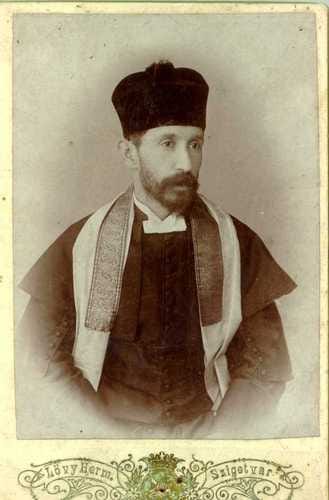
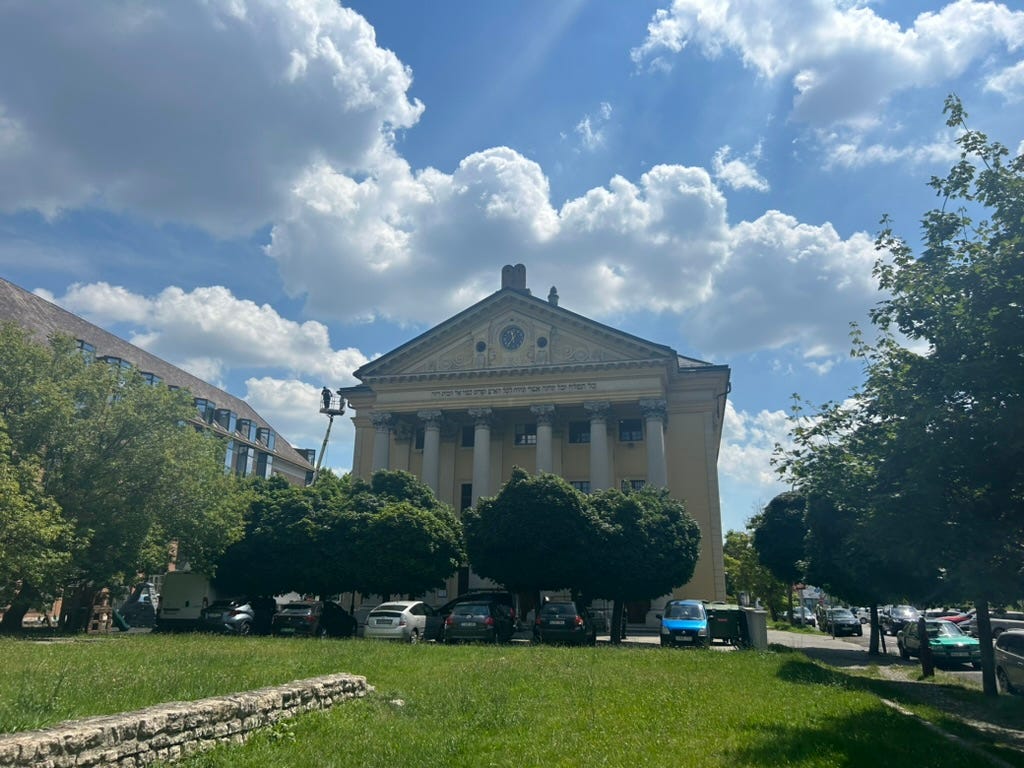

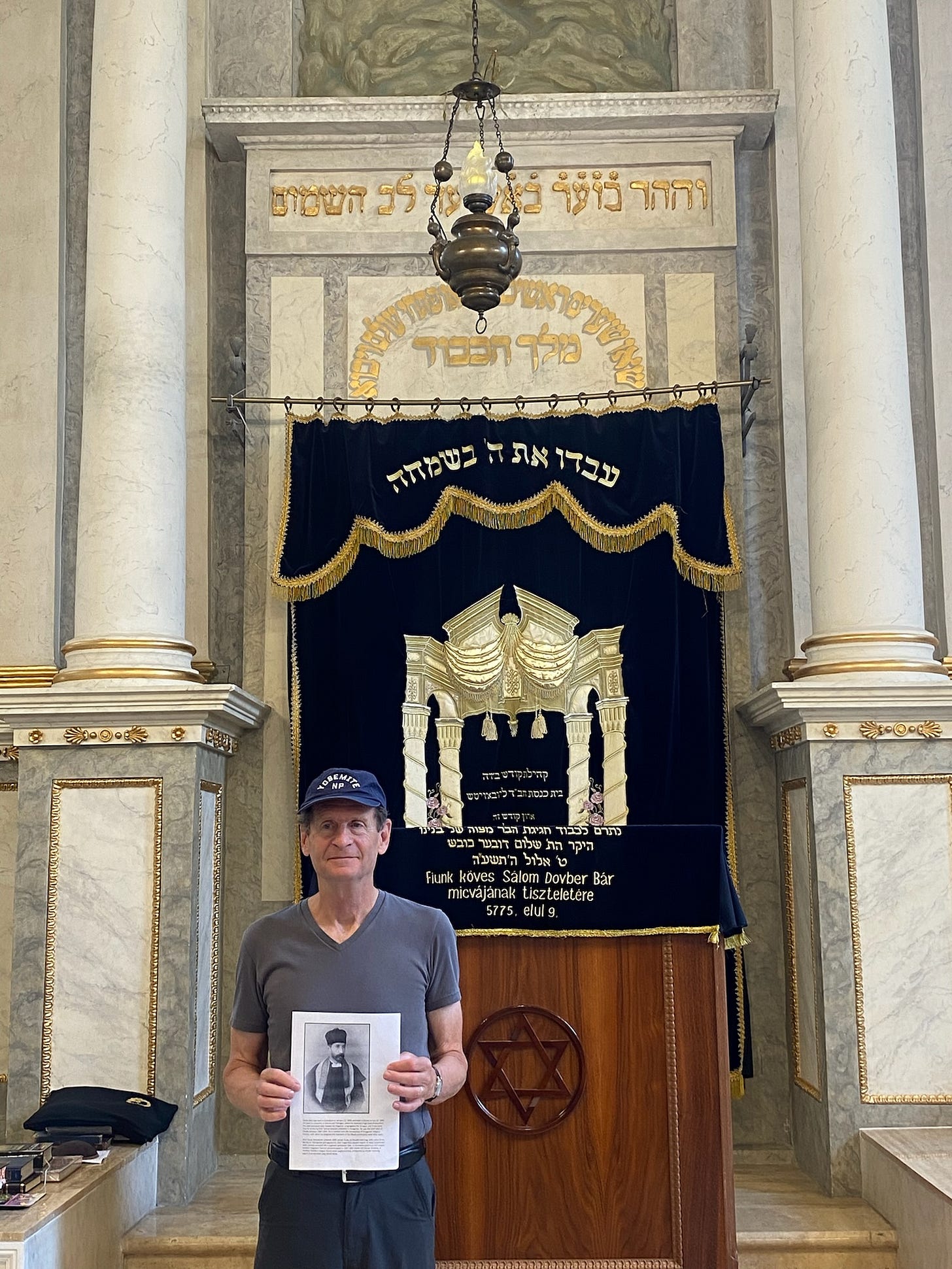
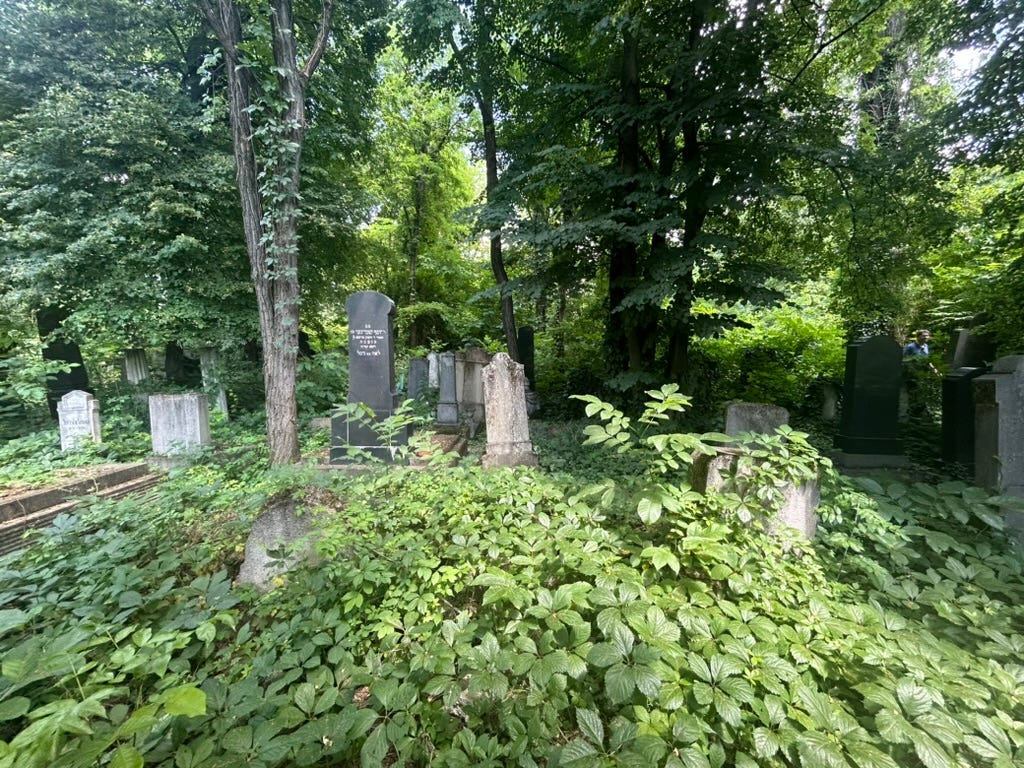
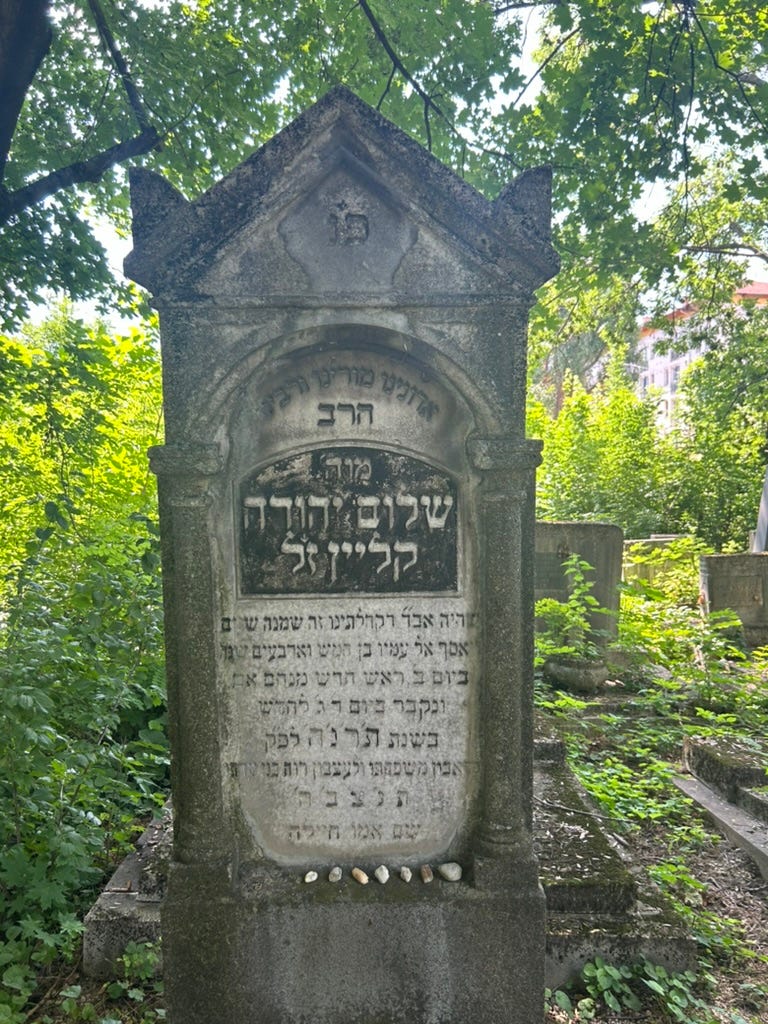


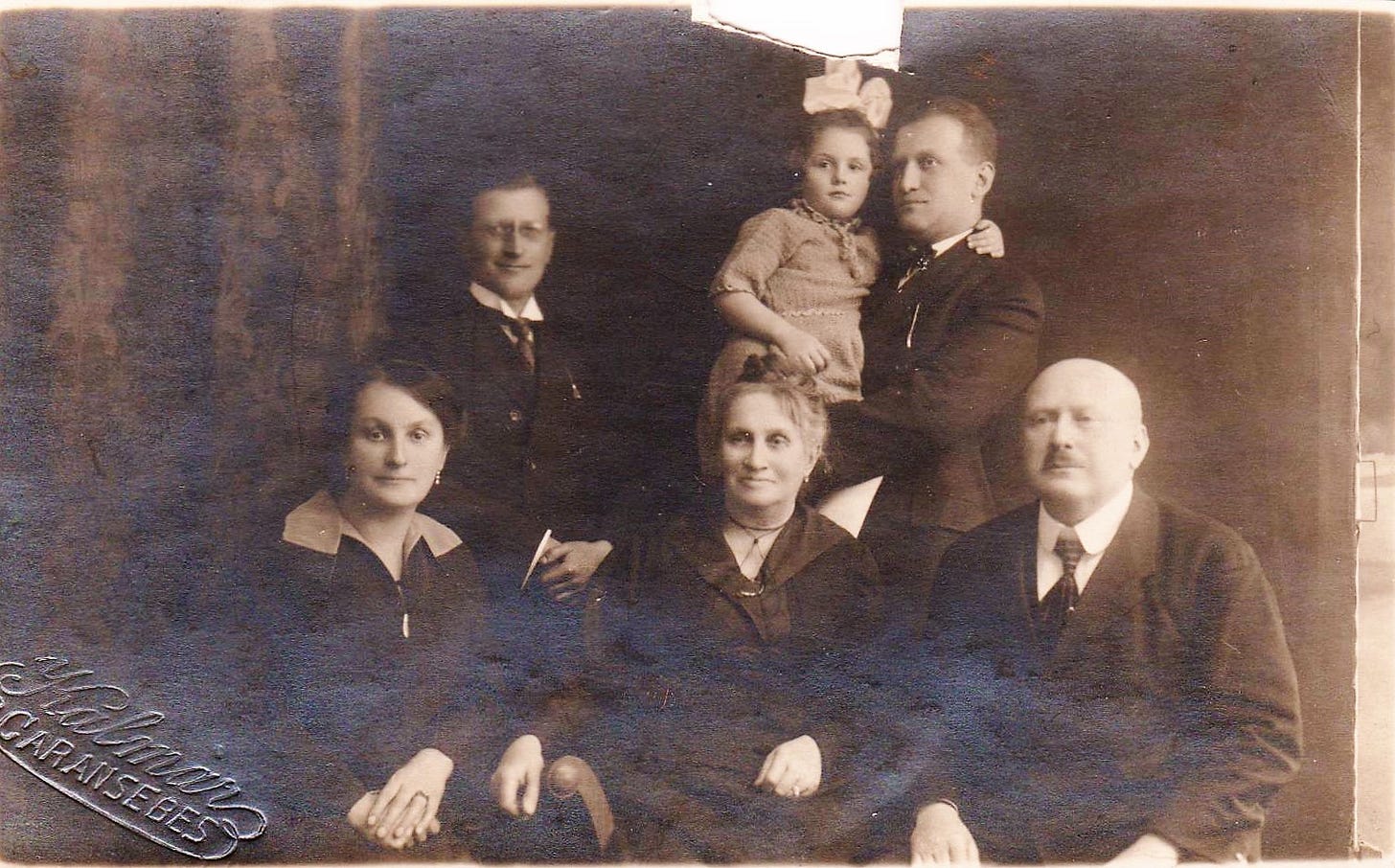


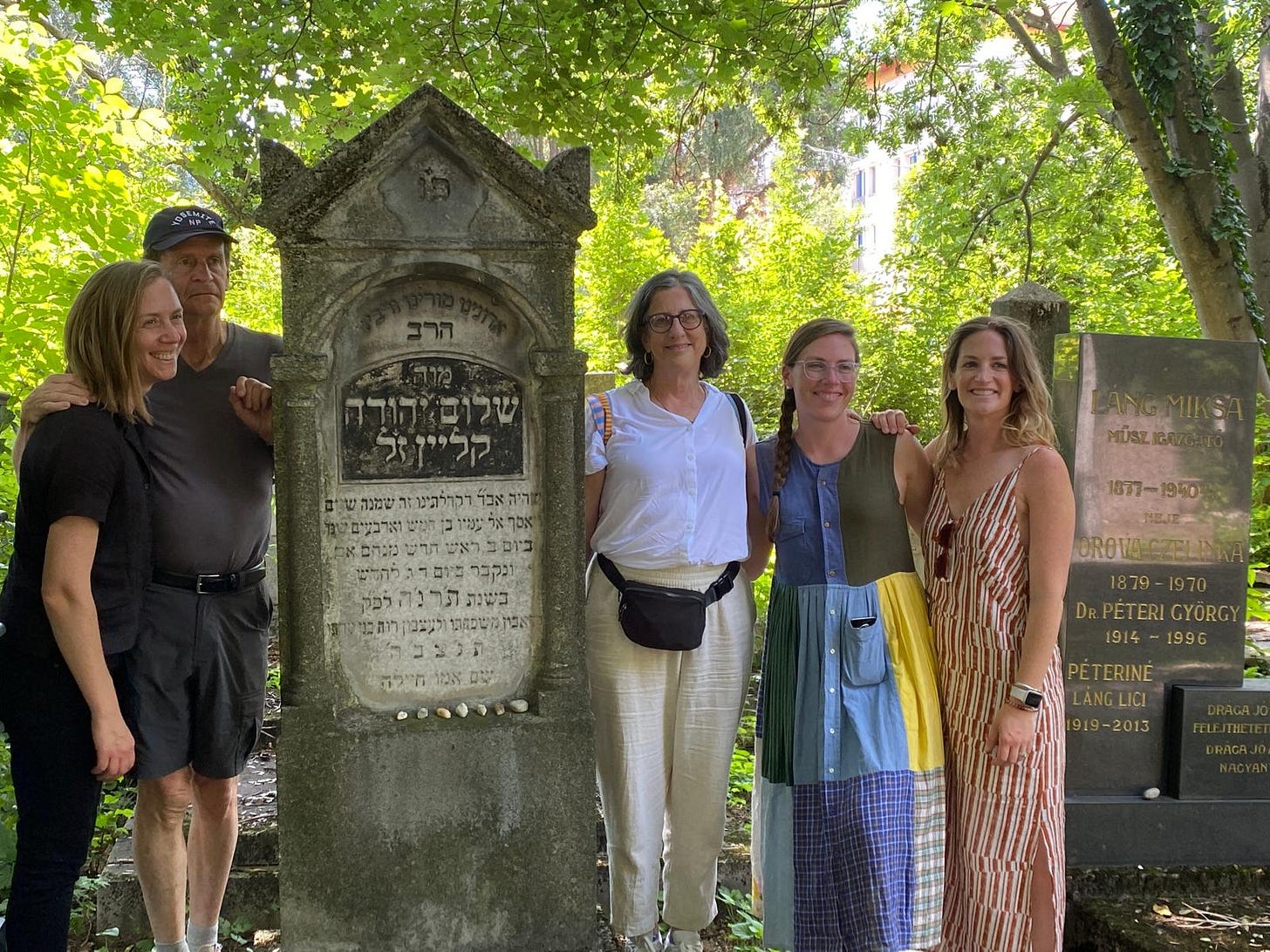
This is an astonishing story! Your great grandfather translated the Talmud into Hungarian! I can’t believe how you found his grave. Another great-grandfather of yours, Ernest Jarvis, also led a congregation. His church, Wellington Church in Glasgow, is an also an imposing neoclassical edifice, strikingly similar architecturally to Rabbi Klein’s !
Fascinating - love how all the parts came together (especially Peter's connections) to make it possible to find the gravestone!
On the translation, I dropped the photo into OpenL.io (https://openl.io/translate/image/hebrew) to get the Hebrew off the picture, then put that into Google Translate. Here's what I got... not sure if this clarifies or muddies things ;)
-- Rabbi Moah. Shalom Yehuda Klein, the late Rinaldi, has been with us for eight years. He was gathered to his people at the age of forty-five on the second day of Rosh Chodesh Menachem Av. He was buried on the fourth day of his new year. --